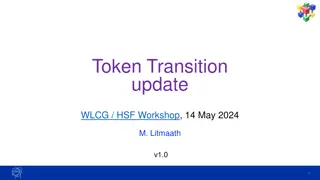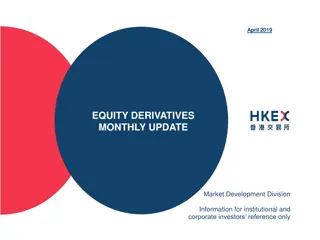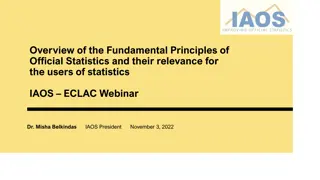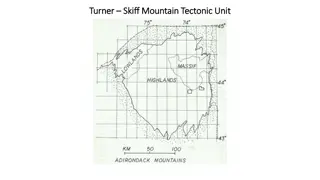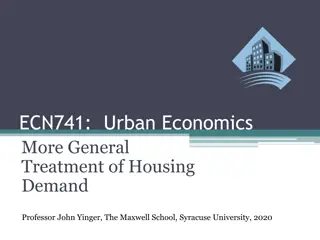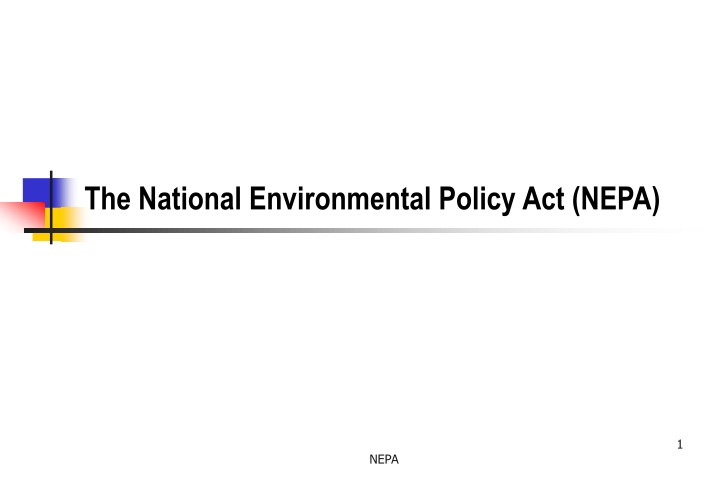
National Environmental Policy Act (NEPA)
Learn about the history, overview, objectives, and importance of the National Environmental Policy Act (NEPA) of 1969. Discover how NEPA establishes policies to protect the environment, promotes harmony between man and nature, and ensures consideration of environmental issues in federal actions.
Download Presentation

Please find below an Image/Link to download the presentation.
The content on the website is provided AS IS for your information and personal use only. It may not be sold, licensed, or shared on other websites without obtaining consent from the author. If you encounter any issues during the download, it is possible that the publisher has removed the file from their server.
You are allowed to download the files provided on this website for personal or commercial use, subject to the condition that they are used lawfully. All files are the property of their respective owners.
The content on the website is provided AS IS for your information and personal use only. It may not be sold, licensed, or shared on other websites without obtaining consent from the author.
E N D
Presentation Transcript
History 1959 Senator James E. Murry (Mont.) introduced the Resources and Conservation Act of 1960 Late 1960 s Senator Henry Jackson (Wash.) and Senator John Dingell (Mich.) collaborated to enact an environmental policy. Early versions of the legislation contained no policy, goals or action-forcing provisions Policy and reporting provisions of NEPA added only AFTER the legislation had passed both houses of Congress and been amended by the House-Senate Conference Committee 2 NEPA
Overview The National Environmental Policy Act (NEPA) of 1969 is the basic national charter for protection of the environment. 3 NEPA
Overview NEPA was necessary to ensure that Federal agencies would consider environmental concerns when making decisions, because often the statutes that created the agencies did not include an environmental mandate. 4 NEPA
Overview NEPA: Established policy [Section 101(a)] Set goals [Section 101(b)] Provided the means for carrying out policy (Section 102) Established the Council on Environmental Quality (CEQ) (Section 202) 5 NEPA
Objectives The objectives of NEPA are to: Declare a national policy that will encourage productive and enjoyable harmony between man and the environment 6 NEPA
Objectives Promote efforts that will prevent or eliminate damage to the environment and biosphere and stimulate the health and welfare of man Enrich the understanding of the ecological systems and natural resources important to the Nation Establish the CEQ 7 NEPA
Objectives How does NEPA accomplish these objectives? By ensuring considerations of environmental issues before conducting major Federal actions 8 NEPA
Title I Section 101 Section 101(a) declares NEPA s general policy: It is the continuing policy . . . to use all practicable means and measures . . . to create and maintain conditions under which man and nature can exist in productive harmony, and fulfill the social, economic, and other requirements of . . . Americans. 9 NEPA
Title I Section 101 - Section 101(b) sets forth NEPA s six goals: Fulfill the responsibilities of each generation as trustee of the environment for succeeding generations Assure for all Americans safe, healthful, productive, and esthetically and culturally pleasing surroundings Attain a wide range of beneficial environmental uses without degradation, risk to health or safety, or other undesirable and unintended consequences Preserve important historic, cultural, and natural aspects of our national heritage . . . and maintain . . . an environment that supports diversity, and variety of individual choices Achieve a balance between population and resource use that will permit high standards of living and a wide sharing of life s amenities Enhance the quality of renewable resources and approach the maximum attainable recycling of depletable resources 10 NEPA
Title I Section 102 Section 102 contains NEPA s action- forcing provisions, which direct all agencies of the Federal Government to consider environmental impact prior to any recommendation; proposal for legislation; or proposed action, planning, or decisionmaking. 11 NEPA
Title II Section 202 created the CEQ, whose members are appointed by the President and approved by the Senate. 12 NEPA
Title II 13 NEPA
The duties and functions of the CEQ are: Assist and advise the President on environmental matters Gather, analyze, and interpret information concerning the quality of the environment Review and appraise Federal Government programs and activities Develop and recommend to the President national policies to improve environmental quality Conduct investigations, studies, surveys, research, and analyses relating to ecological systems and environmental quality Document and define changes in the natural environment Report to the President on the state and condition of the environment Make and furnish to the President studies, reports, and recommendations regarding policy and legislation 14 NEPA
NEPA Compliance Environmental review planning is: An integral part of an integrated environmental compliance planning strategy Should be considered early in the planning process 15 NEPA
Integrated environmental compliance: Avoids or minimizes environmentally related delayed construction starts Avoids or minimizes premature commitment of project resources Allows for stepwise, progressive decisionmaking Avoids prejudicing the NEPA review Will likely facilitate subsequent permitting processes through its early EIS preparation effort 16 NEPA
NEPA Documentation The NEPA processes and documents required by CEQ regulations and DOE NEPA guidelines are as follows: Categorical Exclusion (CX) EA EIS 17 NEPA
Categorical Exclusion A CX: Is a category of actions that individually or cumulatively have no significant effect on the quality of the human environment Does not require an EA or EIS and documentation does not need to be submitted when a CX is applied 18 NEPA
Categorical Exclusion 10 CFR 1021 includes guidance on levels of NEPA documentation Examples of actions that can be categorically excluded are in Tables 1-1 and 1-2 Examples of EM Categorical Exclusions CERCLA removals Waste sorting, characterizing, overpacking facility (not HLW) Modifications for waste minimization/reuse of materials 19 NEPA
An EA has three functions: To determine whether a proposed action requires an EIS To aid an agency s compliance with NEPA when an EIS is not necessary To facilitate preparation of an EIS when necessary 20 NEPA
CEQ regulations state that an EA should briefly discuss: The need for the proposal The environmental impacts of the proposed action and alternatives A listing of agencies and persons consulted Alternatives as required by NEPA Section 102(2)(E) 21 NEPA
Actions Requiring an EA Examples of EM EA actions Siting/construction/operation of water treatment facilities Siting/construction/operations of R&D/ non-hazardous waste incinerators Siting/construction/operation of on-site waste storage facilities (not HLW) 22 NEPA
Finding of No Significant Impact A FONSI explains why an action will not have significant effects on the human environment, and therefore will not require an EIS The public must be notified that a FONSI has been issued A FONSI or proposed FONSI with effects of national concern must be published in the Federal Register 23 NEPA
The FONSI does not have a strictly defined format, but generally should include: A summary of the proposed action Availability - how to obtain the EA Contact name for additional information Proposed action - brief description Background information Environmental impacts Alternatives considered Determination of the finding 24 NEPA
Examples of EM EIS actions Decommissioning of uranium enrichment facilities Decommissioning of reactors Decommissioning of nuclear fuel reprocessing facilities Siting/construction/operation of a major HLW treatment, storage, disposal facilities Siting/construction/operation of waste disposal facility for TRU waste Siting/construction/operation of incinerators (other than R&D or non-hazardous waste) 25 NEPA
Scoping Scoping is a process that solicits public input to the EIS process to ensure that: Issues are identified early and properly studied Insignificant issues do not consume time and effort The draft EIS is thorough and balanced 26 NEPA
Notice of Intent An NOI is published in the Federal Register to let the public know that an EIS will be prepared. This publication initiates: At a minimum, the 30-day public comment period The EIS process An NOI should include: A description of the proposed action and possible alternatives The DOE s proposed scoping process The name and address of a DOE contact person 27 NEPA
Environmental Impact Statement The EIS ensures that the policies and goals defined in NEPA are introduced into the programs and actions of the Federal Government The EIS is to be used by Federal officials (with other relevant material) to plan actions and make decisions 28 NEPA
An EIS should include the following: Cover sheet Summary Table of Contents Purpose of and need for action Alternatives (including proposed action) Affected environment Environmental impacts (effects) List of preparers List of agencies, organizations, and persons to whom copies of the statement are sent Appendices (if any) 29 NEPA
Purpose of the Environmental Impact Statement The EIS ensures that the policies and goals defined in NEPA are introduced into the programs and actions of the Federal Government The EIS is to be used by Federal officials (with other relevant material) to plan actions and make decisions 30 NEPA
NEPA Document Distribution Distribution procedures for any NEPA document must be decided on a case-by-case basis taking into consideration: The nature of the action The extent of public interest 31 NEPA
Notice of Availability The Environmental Protection Agency (EPA) publishes in the Federal Register a weekly NOA of Draft EISs filed during the previous week 32 NEPA
Public Hearings The CEQ guidance for public hearings is found in 40 CFR 1506.6, which states that an agency shall hold or sponsor public meetings or hearings whenever appropriate or required by statute. 33 NEPA
Record of Decision A ROD is published in the Federal Register after the public comments. States the decision by the DOE Identifies all alternatives considered Specifies the alternative(s) considered to be environmentally preferable States whether all practical means to avoid or minimize environmental harm from the alternative(s) selected have been adopted 34 NEPA
Supplements Supplements to draft or final EISs are prepared if there are: Substantial changes made in the proposed action relevant to environmental concerns Significant new circumstances or information affecting the proposed action or its impacts relevant to environmental concerns 35 NEPA
NEPA Integration With Other Laws and Regulations The CEQ regulations state that agencies shall integrate NEPA requirements with other planning and environmental review procedures required by law so that the procedures run concurrently rather than consecutively. 36 NEPA
The Role of Public Interest Litigation NEPA provides that interested persons may participate in the public hearings. If interested persons (those with standing) believe that the EIS is incomplete, or that an EIS is required and not contemplated, they can petition to court to require compliance with NEPA. 37 NEPA
The Role of the Courts The court will require the party proposing the project to do an EIS or to revise a proposed EIS until it meets NEPA standards. The completion of the EIS has no effect on the project the court only rules on the completeness of the EIS. Once the risks are known through the EIS, other political forces may stop the project. 38 NEPA



